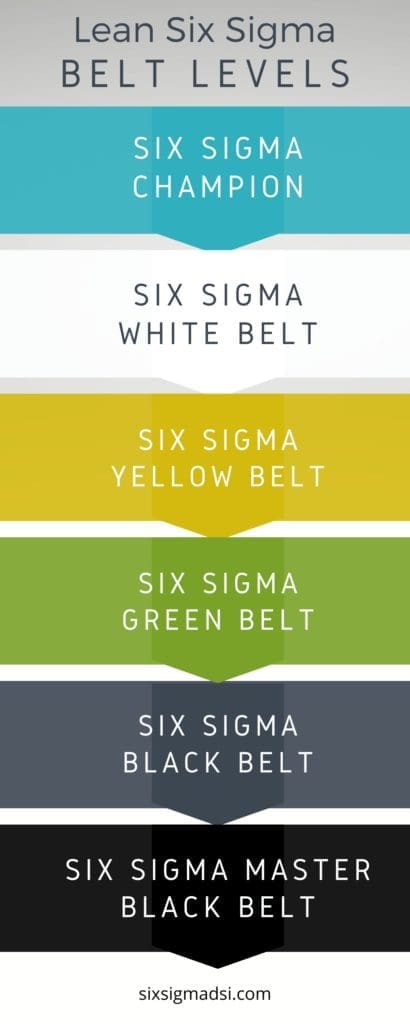Table of contents
What is the First Step to Certification?
A quality Lean Six Sigma certification (online or not) is an approach and methodology that is data-driven. It is used to eliminate defects in any type of process, whether it is manufacturing or transactional. Six Sigma is used by many Fortune 500 companies, as well as prominent brands in the industry to improve business processes.
Six-sigma’s two methodologies are abbreviated ‘DMAIC and ‘DMADV. DMAIC is an acronym for Define Measure Analyze Improve and Control. DMADV is an acronym for Define Measure Analyze Define and Verify.
You will have a wealth of opportunities once you are Six Sigma certified. Six Sigma certifications are globally recognized, so you can get jobs anywhere in the world. Your skills in Six Sigma will be validated with the certification.

I get a lot of calls and emails from people wanting to pursue a Lean Six Sigma Green Belt or Black Belt certification. Most want it as a resume builder or a way to advance in their company. These are great goals! Unfortunately, many who start the journey to certification never finish.
Have you ever heard the saying “filling the tea cup with a fire hose”? This is what happens to many who attempt to get a Green Belt or a Black Belt Certification. They find the requirements too overwhelming. This leads to procrastination, stalled certification projects, and certification requirements that don’t get completed by the deadline.
How To Avoid This Problem?
The first step is to “learn to crawl before you walk.”
In most formal education systems, a person progresses from grade school to high school and then to college. Lean Six Sigma Certification should be followed in a similar pattern.
The First Step
We suggest the first step in your education and certification should be to earn a Lean Six Sigma White Belt Certification.
A snippet from our website describing the White Belt course: “The Lean and Six Sigma White Belt Certification Course is an interactive course to introduce the fundamental principles of a LEAN Enterprise with an Introduction to Six Sigma. You will learn how the two methodologies work in synergy to give you an overall process improvement strategy.”
Once you complete the course and an exam, you will be awarded a Lean Six Sigma White Belt Certificate.

What’s Next?
Once you get your certification, you will either be excited to take the next step, or you will decide to stop at the White Belt training. If you decide to stop, you will have a Lean Six Sigma White Belt Certificate to show for your efforts. If you are excited to continue, then the next step is to earn your Lean Six Sigma Yellow Belt Certification.
A question I usually get asked is: “If I take the White Belt course, am I adding more time to class time than if I were just to progress to the Green Belt?”
That is a great question!
The answer is no. Most training organizations teach each of the certifications in a modular fashion. This means that if the Green Belt course is a 40-hour course and the White Belt is a 4-hour course, when you take the White Belt course you have also completed 4 hours of your Green Belt. The difference is, if you jump straight into the Green Belt and do not finish, then you will have no tangible certification to show for your efforts.
Six Sigma Certification: Steps to Become Six Sigma Certified
Step 1: Understand your organization’s management philosophy
First, you need to determine if your current management philosophy or the industry in which you plan to work requires a Six Sigma certificate. You should recommend a Six Sigma course if you believe it will help your organization reduce waste and eliminate overhead. Six Sigma training can also be beneficial for people who work in the quality management, production, or operations fields and want to increase their job prospects.
Step 2 – Choose between Six Sigma and Lean Six Sigma
Although Six Sigma and Lean Six Sigma are similar in concept, the two have different quality practices. Lean has a different focus than Six Sigma. It is more focused on all aspects of business, rather than just manufacturing. If you work in the manufacturing or production industry, Lean Six Sigma is the best option for you. Six Sigma, however, is preferred if your organization already uses it.
Step 4: Determine Your Level
Are you a Project Manager or someone who helps the Project Manager? Do you know the basics of Six Sigma already?
Six Sigma has different levels depending on the role it plays in management.
White belt: Work on local problem-solving areas that support overall projects, but are not part of the Six Sigma project teams.
Yellow belt: Participates in project teams and evaluates process improvements.
Green Belt: Guide the teams in data collection and analysis to support the Black Belt project.
Black Belt Work on problem-solving project.
Black Belt Master: Coaches and trains Black Belts.
Choose the level that is right for you. White Belt is the best option for someone who does not have project experience. Yellow Belt is for someone with project experience, but no Six Sigma training.
Six Sigma is divided into different levels of understanding. Each level has a different set of tools and techniques. Six Sigma uses two methods: DMAIC and DMADV. These tests include written and practical exams as well as hands-on work. These tests will determine if you possess the necessary proficiency to perform tasks using Six Sigma doctrines. Before preparing for these tests, learn about them.

Step 5 – Enroll in a course
Enrolling in a quality Six Sigma training course is the best way to prepare yourself for a Six Sigma test. You can choose between the classroom and online Six Sigma training. You can select the best option for you based on your needs and convenience. Although there is no official body to provide training, the majority of popular training programs are accredited. You will be able to learn the Six Sigma tools and techniques by doing.
Step 6: Get your certification
Six Sigma certification is offered by a variety of providers. In some cases, you can get it by yourself, but in other cases, organizations provide the resources. The following are some of the top institutions that offer Six Sigma certifications:
- NON-MEMBERS $438
- Certification) (Price: 4,500) Vskills (Govt.
- KPMG (Price: 23,000)
- Indian Statistical Institute Price: $9,776
- BSI Group (Price: 28,000.
We provide a variety of quality online Six Sigma certifications. Some courses also offer the opportunity to take a Six Sigma certification exam. It is important to learn six sigma skills if you want to advance in your career. This is a good reason to opt for the six sigma certificate.



